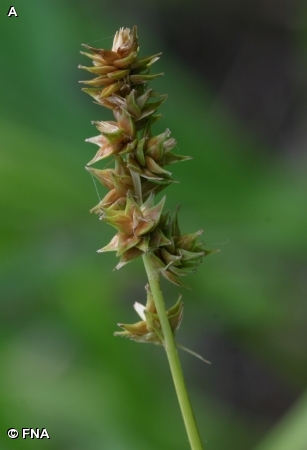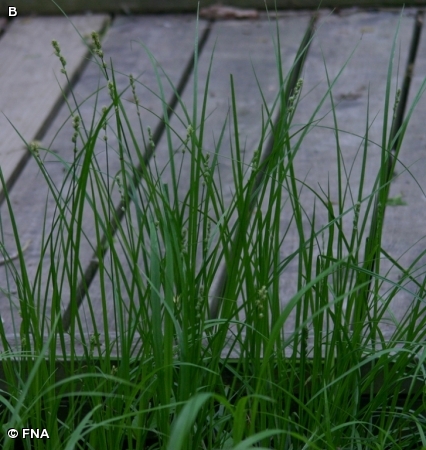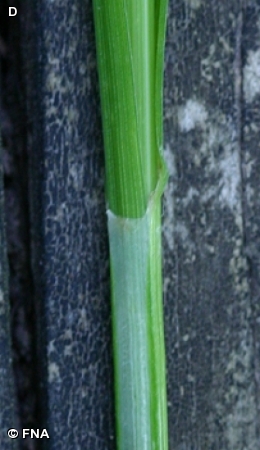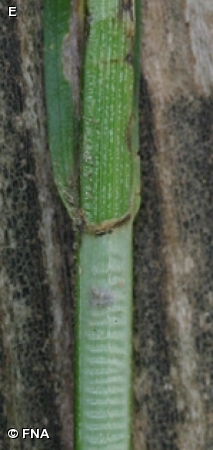
Sedge growing in bunches with flowering stems up to 30 inches tall and leaves up to 12 inches long and 1/3 inch wide. The elongate to oval flower cluster is quite compact, bearing 5-10 spikes, overlapping densely at the tip but often slightly separated below (A). Spikes are all alike, each bearing male flowers at the tip and female ones below (C). Males become inconspicuous after flowering, represented only by a few remaining pale scales at the tip of the spike (A). Leaf sheaths are thin and transparent at the top (D). Sometimes they fit snugly around the stem, but they may be quite loose, baggy and easily torn with prominent cross-wrinkles. The green perigynia turn brown at maturity.
Openings in upland or lowland woods, open disturbed areas, prairies, roadsides. At Fontenelle Forest it is common on South Stream Trail and in the uplands along Signal Ridge Trail. Look for Heavy Sedge at Neale Woods along the Missouri River Ecology Trail. Flowering occurs in early May. The green perigynia begin to turn brown in early June and may persist into July.
Glomerate Sedge (Carex aggregata) is also common at FF/NW. It is not described separately, as many characters overlap, and the author has had difficulty consistently separating it from Heavy Sedge. Typically, Glomerate Sedge prefers shadier sites, the spikes are a little more open and the back of the leaf sheath is white-spotted. Also, the upper margin of the leaf sheath usually is thicker with yellow or brown discoloration (E), while that of Heavy Sedge is thin and transparent (D). Bur-reed Sedge (Carex sparganioides) is easier to separate. It has broader leaves and an open flower cluster with widely spaced lower spikes.
The content of NatureSearch is provided by dedicated volunteer Naturalists of Fontenelle Forest who strive to provide the most accurate information available. Contributors of the images retain their copyrights. The point of contact for this page is: Neal Ratzlaff.




